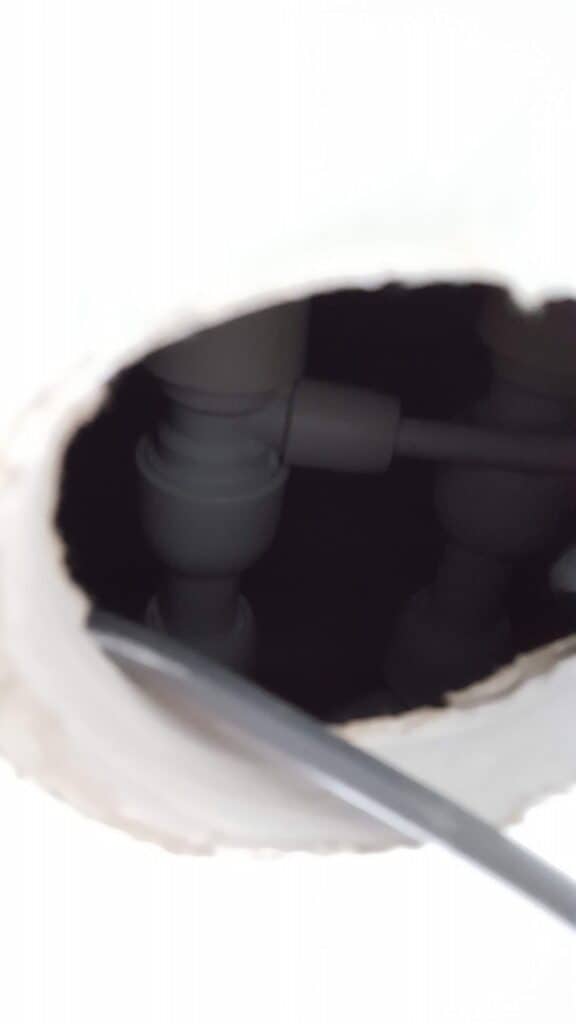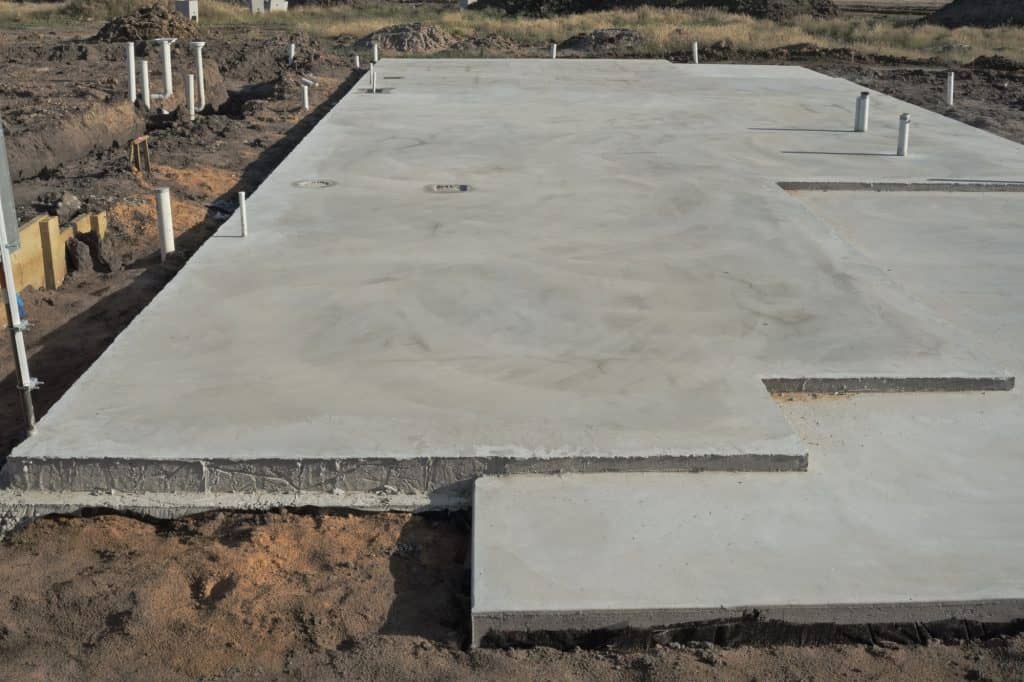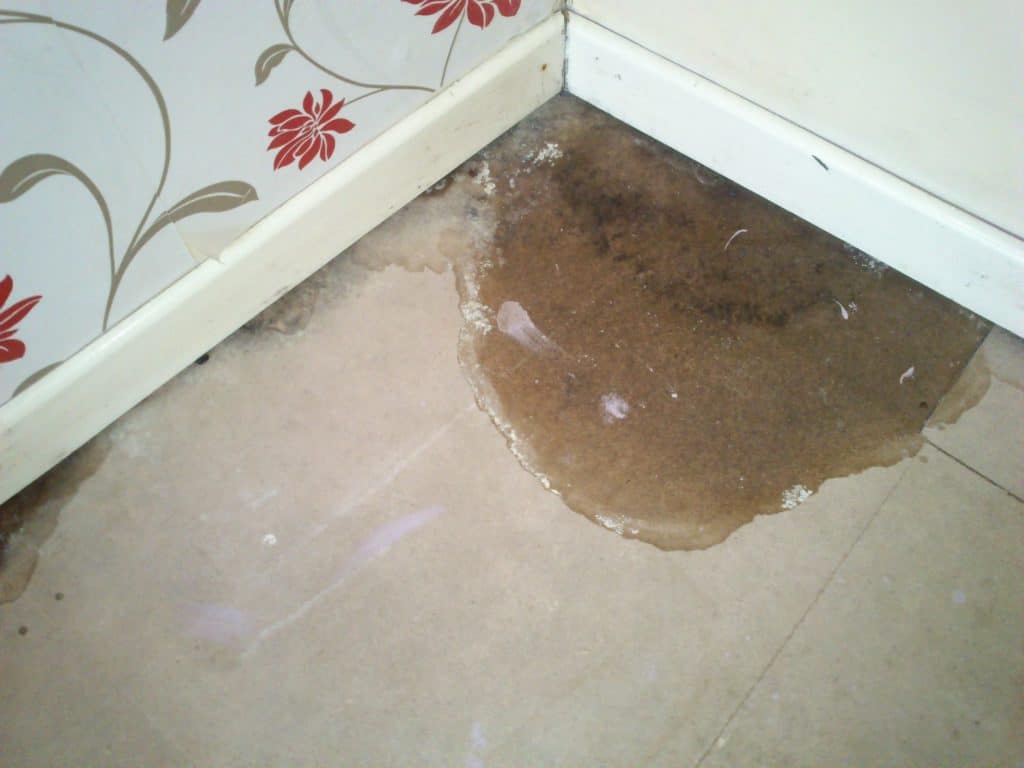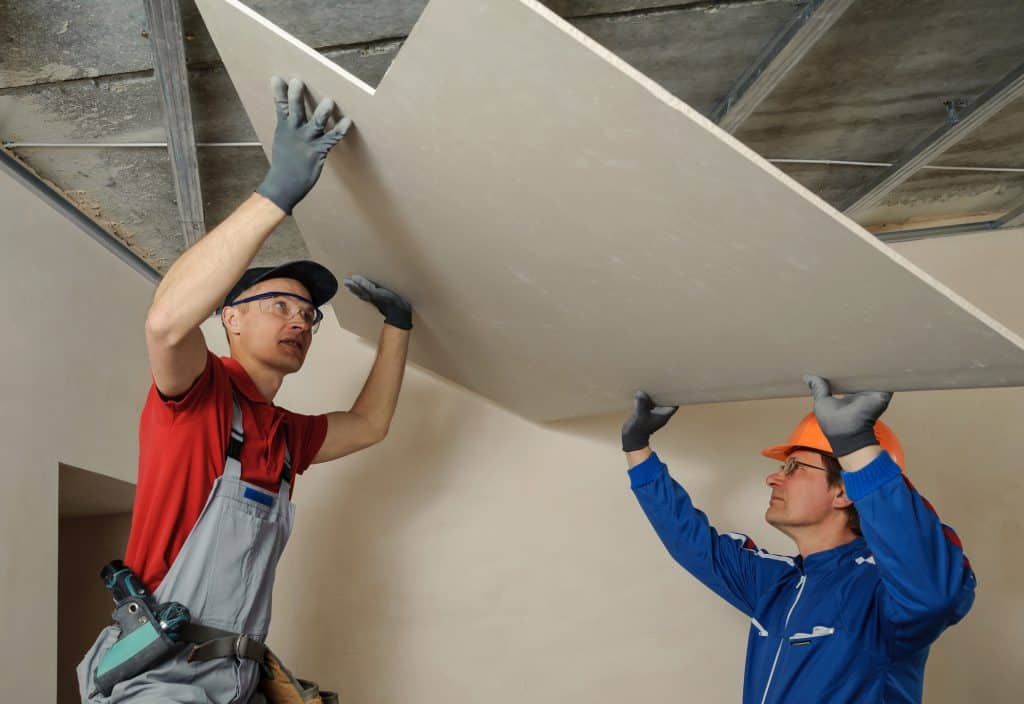If you are a homeowner, you understand the importance of taking care of your building. That way, you can protect the value of your home and prevent serious repairs from happening down the road. Therefore, it is important for you to pay close attention to your roof, your utilities, and your floors. Even though you do not necessarily think about your floors regularly, there are issues that can arise from time to time. As you walk around your house, you may notice that there are warm spots in certain spots on your floors. Why do you have warm spots in your home? Is this normal? Take a look at a few important points below.
Warm Spots Deserve Your Immediate Attention

When you get out of bed in the morning, stepping on a cold floor can immediately grab your attention. Eventually, you get used to this, which is why a warm spot in your home requires your immediate attention. Even though this does not necessarily mean that something is dangerously wrong with your home, you do need to figure out what the cause might be. That way, you can address it. What are a few possible reasons why you are noticing warm spots? The few possible causes include:
You Have Ductwork Running Beneath Your Floors
One of the first reasons why you might be noticing hot spots on your floors is that you have ductwork running beneath your floors. During the winter months, you are probably going to be running the heater fairly regularly. As a result, hot air is going to be passing through the ductwork you have running through your house. That is the way you are going to keep your building warm.
Even though you do not necessarily see your ductwork, it is doing the important job of keeping your house comfortable. When your building was constructed, contractors tried to place ductwork in strategic locations throughout your home. Sometimes, this might be running underneath your floor. As the ductwork heats up, you might notice warm spots in certain locations throughout your home.
This is not necessarily something you have to worry about; however, you do need to make sure you get your HVAC unit maintained on time. This is an important part of protecting the valuable ductwork that runs throughout your home.
Your Might Have Downlights in the Ceiling
If you are noticing warm spots on your floors upstairs, there is a chance that you might be walking on top of downlights in the ceiling. Think about what is directly beneath the floor you are walking on. Is there a room underneath you? Then, figure out if there are lights in the ceiling. Are there lights in the ceiling directly beneath where you are standing? If this is the case, the floor is probably heating up because the lights on the other side of the floor are heating up as well.

This is not necessarily a problem. When you leave lights on, they naturally warm up. At the same time, there are ways you can address this issue. First, you can have an electrician take a look at the lights to make sure they are functioning properly. Then, if this is still something you want to fix, you may want to swap out the light bulbs for something that does not heat up as much. For example, a lot of homeowners have made the transition from traditional incandescent light bulbs to LED light bulbs. LED light bulbs last longer than traditional bulbs, so they might save you some money in addition to removing hotspots beneath your floors.
You Could Have Hot Water Pipes Nearby
One of the most common reasons why you may be feeling hot spots beneath your floors is that there are hot water pipes running underneath them. Try to figure out where your hot water heater is located. Remember that if you have a two-story house, you may have a hot water heater for each individual story. Then, think about where the pipes are running. If you have hot water pipes running directly underneath your floors, this could be the reason why you are noticing hot spots.

So, if your floors are heating up, does this mean you have a hot water leak? This is probably not the case. If you have a leaking water pipe, you are probably going to notice much more than just hot spots underneath your floors. You will probably see visible signs of water damage, including puddles and stains. At the same time, if you have not noticed these warm spots on your floor before, you may want to reach out to a contractor who can take a closer look at your hot water heater and the floors themselves.
Your Crawl Space Could Be Getting Hot
If you are noticing warm spots on your floors downstairs, there could be a chance that your call space is heating up. You need to be familiar with how your home has been constructed. If there is a crawl space underneath your house you need to make sure it is sealed appropriately to prevent standing water from accumulating inside, which could lead to some serious damage. At the same time, sealing your crawl space is also going to cause it to trap warm air and humidity. Gradually, this can contribute to warm spots throughout your house.
If you are concerned about the integrity of your crawl space, you may want to have someone come and take a look at it. You need to make sure there is no standing water in your crawl space, which can also contribute to rising humidity levels and hot spots. Then, you might be able to work with a professional contractor who can help you address this issue. If you feel like your home is more humid than it used to be, there could be an issue with the crawl space. This is something you want to address before it gets out of hand.
There Could Be a Leak in your Concrete Slab

Finally, one of the biggest issues that could be contributing to hotspots throughout your house could be a leak in your concrete slab. If your house has been built on a concrete slab, then there is no crawl space to worry about; however, having a concrete slab comes with its own set of issues. Your floors need to be at a consistent temperature, particularly if they are on the first floor. If your house has been built on a slab and you are feeling temperature differences, you need to call a contractor as quickly as possible. That way, you can make sure there is no leak present.
Why Does a Concrete Slab Leak? Understanding the Causes of a Slab Leak
If your home has been built on a concrete slab, it should sit on consistent soil. If the soil underneath your concrete slab is not stable, then a slab leak will eventually happen. As the soil shift underneath your home, it can cause the concrete slab to become unstable as well. Eventually, the stress that has been placed on the concrete slab is going to cause it to crack.
So, what is it about shifting concrete that causes a leak to develop? This has to do with the plumbing joints that are present underneath the slab. Water gradually runs underneath your house. As this happens, it erodes the soil. When the soil starts to erode, the support from the slab begins to weaken. This places more strain on the slab and could cause cracks to develop. Hairline cracks are not necessarily a concern; however, if the cracks widen to the point where you can slide a quarter through them, this is a serious issue. This allows water to enter your home.
What Are the Risks of a Slab Leak?
If there is a leak present in your slab and you do not address it, water has the potential to completely destroy your home. For example, this water could cause serious damage to your flooring, which has to be replaced. Water could also get in your walls, leading to wood rot:

This can impact the stability of your building. Water damage can also impact your valuable appliances, which you might need to replace.
Unfortunately, fixing a leak that is present in a concrete slab is a major job. This is not something you should do on your own, and it is important to reach out to a contractor who can help you. How should you address a leak in your concrete slab?
How To Address a Leak in Your Concrete Slab
If you are noticing hotspots on your ground floor, you should contact the contractor as quickly as possible, particularly if your house has been built on a slab. When the contractor arrives, there are several steps that he or she is going to follow. These steps include:
Locate the Hot Spot Quickly
First, the contractor is going to ask you where you are noticing the hotspot. Then, he or she is going to use a thermal imaging camera to confirm that the temperature is actually higher in that location. There are different types of thermal imaging cameras; however, all of them are trained to detect temperature differences. If the contractor has confirmed that there is a hotspot and that location, it is time to figure out why this is happening.
Find the Cause of the Hot Spot
Next, the contractor is going to try to find the cause of the hotspot. For example, the contractor is going to complete a thorough inspection of the concrete slab itself. This includes walking around the outside of the building to look for any signs of cracks. The contractor is also going to take a close look at the rest of the house to look for any signs of a plumbing leak.
For example, the contractor may eventually discover that the hot water heater is a culprit. If there is a leak in the hot water heater downstairs, there could be hot water running underneath your home. This could be contributing to hotspots in certain locations.
Fixing a Hot Water Leak Underneath a Concrete Slab
After the contractor has figured out what the problem is, he or she is going to get to work fixing it. If there is a hot water leak underneath the concrete slab, the only way to deal with this is to drill directly into the floor. The flooring will have to be removed, and every concrete beam in the area will have to be inspected. If there is an issue with the concrete beam, then this has to be removed as well.
After the contractor is physically able to access the hot water leak, he or she is going to patch it. Importantly, there could be some situations where that specific hot water line has to be rerouted. Or, the contractor may specify that he or she has to change the location of the concrete beam. There could be some situations where the hot water heater has to be removed and placed in another location entirely to prevent this from happening in the future.
Of course, once the contractor is finished, the hole in the floor is going to be patched. Then, the floor is going to be replaced as well. The contractor will do everything in his or her power to match the shading of the floor to make it look as good as possible.

Clearly, this is a significant job, which is why it is important for homeowners to invest in routine maintenance. If you can prevent these leaks are happening, you may be able to avoid significant repair bills down the road.
Frequently Asked Questions About Hot Spots in the Home
There are several common questions that homeowners have about hot spots in the home. These include:
What are the most common signs that there is a leak in my slab?
It is critical for you to identify leaks in your concrete slab as quickly as possible. For example, if you notice a spike in your water bill, there could be a leak present somewhere in your home. If you notice hot spots on your floors, this could also be a sign that you have a leak in your concrete slab. You may also notice lower water pressure in your home.
If there is a leak in my concrete slab, how much is this going to cost to fix?
It is not cheap to fix a leak in your concrete slab; however, the costs can vary widely depending on the cause of the leak. It also depends on whether the floors have to be replaced and how long it takes the contractor to get to the source of the problem.
Is there any way I can prevent a leak in my concrete slab from taking place?
If you are wondering how you can prevent a leak from taking place, the most important thing you have to do is invest in routine maintenance. Make sure all of your utilities and your roof are inspected at least once per year. That way, any issues are identified before they leave to catastrophic issues.
Why is my floor warm in spots?
There could be several reasons why your floor is warm in spots. One possibility is that there is a heating system installed underneath the floor. Another possibility is that there is an issue with your foundation, such as a leak or insulation problem. It is important to investigate further to determine the cause.
Could this be a serious issue?
The seriousness of warm spots on your floor depends on the underlying cause. If it is simply a result of a heating system, then there is likely nothing to worry about. However, if it is due to a foundation issue, it could indicate a more serious problem such as a water leak or mold growth. It is recommended to have a professional assess the situation to ensure appropriate repairs are made.
Should I contact my insurance company for this?
It is advisable to contact your insurance company to determine if your policy covers repairs for issues related to warm spots on the floor. Depending on your coverage and the cause of the problem, they may be able to offer assistance or guidance on next steps.
How can I repair the warm spots on my floor?
The necessary repairs will depend on the underlying cause of the warm spots. If it is due to a heating system, you may need to have it serviced or adjusted. If it is a foundation issue, it is recommended to consult with a professional contractor or foundation specialist to determine the appropriate repairs needed.
Are warm spots on the tile different from warm spots on other types of flooring?
The underlying cause of warm spots can be the same regardless of the type of flooring. However, the way the heat is transferred and felt may vary depending on the specific surface material. It is best to consult with a professional to fully understand the situation and determine the appropriate course of action.
Is it normal for a sink to create warm spots on the floor?
It is not common for a sink to directly cause warm spots on the floor. However, if there is a leak in the plumbing beneath the sink, it could result in warm spots due to the hot water. If you suspect a plumbing issue, it is advised to have it inspected by a licensed plumber.
Can moisture cause warm spots on the floor?
Moisture itself typically does not cause warm spots on the floor. However, if there is dampness or water leakage present, it could lead to other issues such as mold growth or damage to heating systems, which in turn may cause warm spots to occur. It is important to address any moisture-related problems promptly to prevent further damage.
What other options should I consider besides repairing the warm spots on my floor?
Depending on the cause and severity of the warm spots, you may have a few options to consider. If the warm spots are minimal and not causing any major issues, you could choose to leave them as is. However, if they are causing discomfort or signaling a more serious problem, it is recommended to consult with a professional to determine the best solution.
Does this issue have anything to do with my privacy policy?
The issue of warm spots on your floor is unrelated to your privacy policy. Privacy policies typically govern the collection and use of personal data by a company or organization, and do not typically encompass physical issues within a property.
What should I do if I notice warm spots on my floor?
If you notice warm spots on your floor, the first sign is to investigate and identify the underlying cause. If it is a minor issue such as a heating system, there may be nothing to worry about. However, if it is a more serious problem such as a foundation issue, it is recommended to seek professional advice to ensure timely repairs are made.
